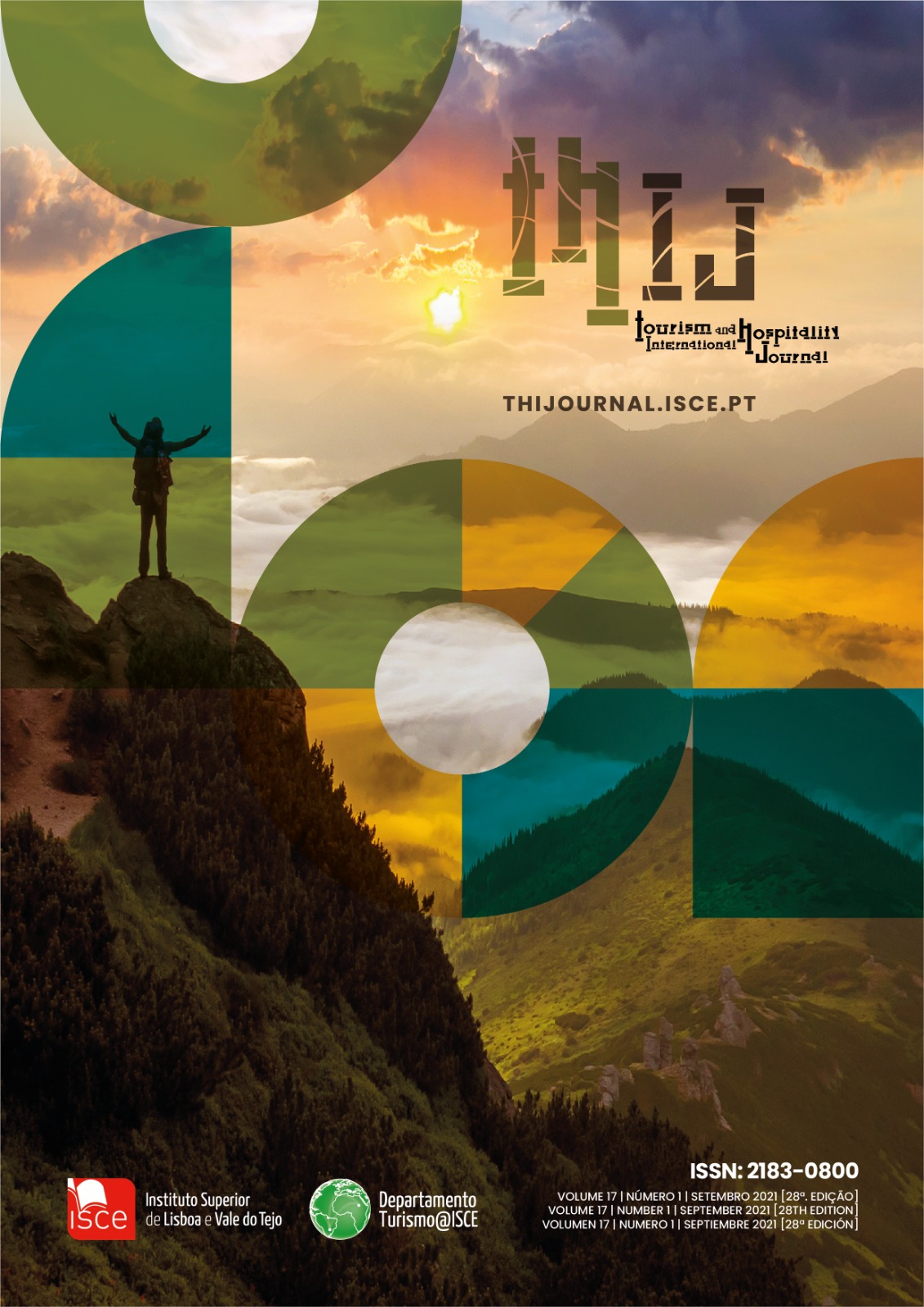Development of visual-spatial thinking and intelligence in university students
DOI:
https://doi.org/10.57883/thij17(1)2021.30910Keywords:
Visual-spatial thinking and intelligence, Multiple intelligences, Mental or conceptual mapsAbstract
In this article, the authors present the results of the study on the development of visual-spatial thinking and intelligence, within the framework of Gardner's theory of Multiple intelligences, as well as the work carried out by Novak and Buzan on concept and mental maps. With research of a descriptive type and quantitative approach, the measurement was made in 78 students of the subject Fundamentals of Marketing and Advertising of a Higher Education Institution (IES) in Colombia. The research shows that the use of this strategy constitutes a tool to enhance both spatial thinking and visual-spatial intelligence, as they stimulate mental imagery; the creation of images in order to explain an idea; the development of visual memory to execute and recreate previous perceptions; the improvement of the artistic and aesthetic sense; the practice to control fine motor movement; the practice of visual art, since there is retention of objects, figures, colors, proportion and perspective; among other core skills that characterize this type of intelligence
References
Almulla, M. A., & Alamri, M. M. (2021). Using conceptual mapping for learning to affect students’ motivation and academic achievement. Sustainability (Switzerland), 13(7). https://doi.org/10.3390/su13074029.
Astriani, D., Susilo, H., Suwono, H., Lukiati, B., & Purnomo, A. R. (2020). Mind mapping in learning models: A tool to improve student metacognitive skills. International Journal of Emerging Technologies in Learning, 15(6), 4–17. https://doi.org/10.3991/IJET.V15I06.12657
Armstrong, T. (2012). El poder de la neurodiversidad. Barcelona: Paidós.
Armstrong, T. (2017). Multiple intelligences in the classroom. Alexandria I. VA: Copyrighted Material.
Aziz-Zadeh, L., Liew, S. L., & Dandekar, F. (2013). Exploring the neural correlates of visual creativity. Social Cognitive and Affective Neuroscience, 8(4), 475–480. https://doi.org/10.1093/scan/nss021.
Buzán, T. (1996). Cómo crear mapas mentales. El instrumento clave para desarrollar tus capacidades mentales que cambiará tu vida. Barcelona: Urano.
Buzán, T. (2004). Cómo crear mapas mentales. Barcelona: Urano.
Carrasco, C. A., & González, J. M. M. (2020). Propiedades psicometricas de una escala sobre el aprendizaje del mapa mental aumentado en puzle en Educacion Superior/Psychometric properties of the questionnaire about the learning of the Augmented Mind Map in Puzzle in Higher Education. Revista Complutense de Educacion, 31, 295+.
Cervantes, V. (1999). El ABC de los mapas mentales. México: Offset universal S.A.
Chambi Mescco, E. (2020). Utilidad percibida de los mapas conceptuales por estudiantes de educación superior. Apuntes Universitarios, 10(3), 146–157. https://doi.org/10.17162/au.v10i3.476.
Cui, X., Jeter, C. B., Yang, D., Montague, P. R., & Eagleman, D. M. (2007). Vividness of mental imagery: Individual variability can be measured objectively. Vision Research, 47(4), 474–478. https://doi.org/10.1016/j.visres.2006.11.013.
De la Parra, E. & M. del C. Madero. (2007). La fascinante técnica de los esquemas mentales. México: Panorama editorial.
De Zubiría Samper, J. (2006). Las competencias argumentativas: la visión desde la educación. Bogotá: Editorial Magisterio.
Del Castillo & Olivares Barberán, J. M. (2013). ¿Qué son los mapas conceptuales? Enseñanza & Teaching, 2 (31), 145-165.
Gálvez, G., Parra, C., Saiz, I. (1988). Didáctica de las matemáticas. Aportes y Reflexiones. Buenos Aires: Paidós.
Gardner H. (1997). La educación de la mente y el conocimiento de las disciplinas. Barcelona: Paidós.
Gardner H. (2000). La educación de la mente y el conocimiento de las disciplinas. Barcelona: Paidós.
Gardner H. (2005). Inteligencias múltiples. La teoría en la práctica. Buenos Aires: Paidós.
Gardner, H. (1993). Estructuras de la mente. Nueva York: Fondo de Cultura Económica.
Gardner, H. (1997). Estructuras de la mente. La teoría de las inteligencias múltiples. Bogotá: Fondo de Cultura económica.
Garnett, S. (2009). ¿Cómo usar el cerebro en las aulas para mejorar la calidad y acelerar el aprendizaje? Madrid: Narcea. http://www.facmed.unam.mx/emc/computo/mapas/mapaconceptual.htm
González, J. M. M., Ariza, M. D. H., & Díaz, V. M. (2020). Validation of a scale of mind map as a learning strategy in the initial teacher training. Estudios Sobre Educacion, 38, 79–100. https://doi.org/10.15581/004.38.79-100
Jirásek, I., Plevová, I., Jirásková, M., & Dvořáčková, A. (2016). Experiential and outdoor education: the participant experience shared through mind maps. Studies in Continuing Education, 38(3), 334–354.
Kotler, P. & Armstrong, G., (2013). Fundamentos de marketing.
Labarrere, A. (1994). Pensamiento, análisis y autorregulación en la actividad cognoscitiva de los alumnos. Ángeles México: Ángeles Editores.
León, X. & Velásquez, B. (2011). ¿Cómo la estrategia de mapas mentales y conceptuales estimulan el desarrollo de la inteligencia espacial en estudiantes universitarios? Tabula Rasa. No. (15), 221-254.
León, X. & Velásquez, B. (2011). ¿Cómo la estrategia de mapas mentales y conceptuales estimulan el desarrollo de la inteligencia visual-espacial en estudiantes de la universidad? TABULA RASA, (15), 221-254.
Machado, C. T., & Carvalho, A. A. (2019). Os efeitos dos mapas conceituais na aprendizagem dos estudantes universitários. ETD - Educação Temática Digital, 21(1), 259–277. https://doi.org/10.20396/etd.v21i1.8652010.
Ministerio de Educación Nacional (1998). Matemáticas. Lineamientos curriculares. Bogotá: MEN.
Montoya, Luz María. (2004). Propuesta de un proceso educativo de habilidades del pensamiento como estrategias de aprendizaje en las organizaciones. México: UNAM.
Novak, J.D. & Gowin, D.B. (1988). Aprendiendo a Aprender. Barcelona: Martínez Roca.
Novak, J.D., Gowin, D.B. & Johansen, G. (1983). The Use of Concept Mapping and knowledge vee with junior high school science students. Article first published online: 22 AUG 2006 DOI: 10.1002/sce.3730670511
Novoa Castillo, P. F., Núñez Lira, L. A., Sánchez Aguirre, F. de M., Flores Ccanto, F., Díaz Dumont, J. R., & Uribe Hernández, Y. C. (2020). Mapas mentales armónicos (mma) como estrategia metacognitiva para la comprensión lectora en estudiantes universitarios. Apuntes Universitarios, 10(1), 101–118. https://doi.org/10.17162/au.v10i1.423.
Ontoria A. & De Luque, A. (2007) ¿Cómo Potenciar la capacidad de aprender y pensar? Madrid: Narcea.
Ontoria A. & De Luque, A. (2008). Aprender con mapas mentales. Una estrategia para pensar y estudiar. Madrid: Narcea.
Ontoria, A. (2006). Aprender con mapas mentales. Madrid: Narcea.
Ontoria, A. (2006). Mapas Conceptuales. Una técnica para aprender. Madrid: Narcea.
Segovia, L. (2001). Los Mapas conceptuales para Ordenar y Procesar. Recuperado de: https://doi.org/10.1016/j.tine.2017.02.002
Şen, E., & Çoban, S. (2018). The effect of using mind mapping technique in violin training on the cognitive, psychomotor skills and attitudes of the students. Egitim ve Bilim, 43(194), 285–310. https://doi.org/10.15390/EB.2018.7623
Shearer, C. B., & Karanian, J. M. (2017). The neuroscience of intelligence: Empirical support for the theory of multiple intelligences? Trends in Neuroscience and Education, 6(February), 211–223.
Stokhof, H., de Vries, B., Bastiaens, T., & Martens, R. (2020). Using mind maps to make student questioning effective: Learning outcomes of a principle-based scenario for teacher guidance. Research in Science Education, 50(1), 203–225. https://doi.org/10.1007/s11165-017-9686-3.
Subirana, V. (2015). La pedagogía transformadora. Madrid: Sanz y Torres, S. L., Make student questioning effective: Learning outcomes of a principle-based scenario for teacher guidance. Research in Science Education, 50(1), 203–225. https://doi.org/10.1007/s11165-017-9686-3.
Thorne, K. (2008). Motivación y creatividad en clase. Barcelona: Editorial Grao.
Tushko, K., Dyiak, V., Levchuk, N., & Kurashkevych, A. (2020). Implementation of World Experience of Using the Mind Map Method in the System of Higher Military
Education of Ukraine: Comparative Analysis. Revista Romaneasca Pentru Educatie Multidimensionala, 12(1), 150–161.
Velásquez, B., Remolina, N. & Calle, G. (2013). Habilidades de pensamiento como estrategia de aprendizaje para los estudiantes universitarios. Revista de investigaciones UNAD. 12 (2), 23-41.
Velásquez, B., Remolina, N., Calle, G. & Saavedra, L. R. (2014). Inteligencias múltiples para potenciar el aprendizaje de los estudiantes universitarios. Bogotá: Universidad Colegio Mayor de Cundinamarca.
Downloads
Published
How to Cite
Issue
Section
License
Copyright (c) 2021 This work is licensed under a Creative Commons - Attribution 4.0 International (CC BY 4.0)

This work is licensed under a Creative Commons Attribution 4.0 International License.
This work is published under the Creative Commons Attribution 4.0 International License.






